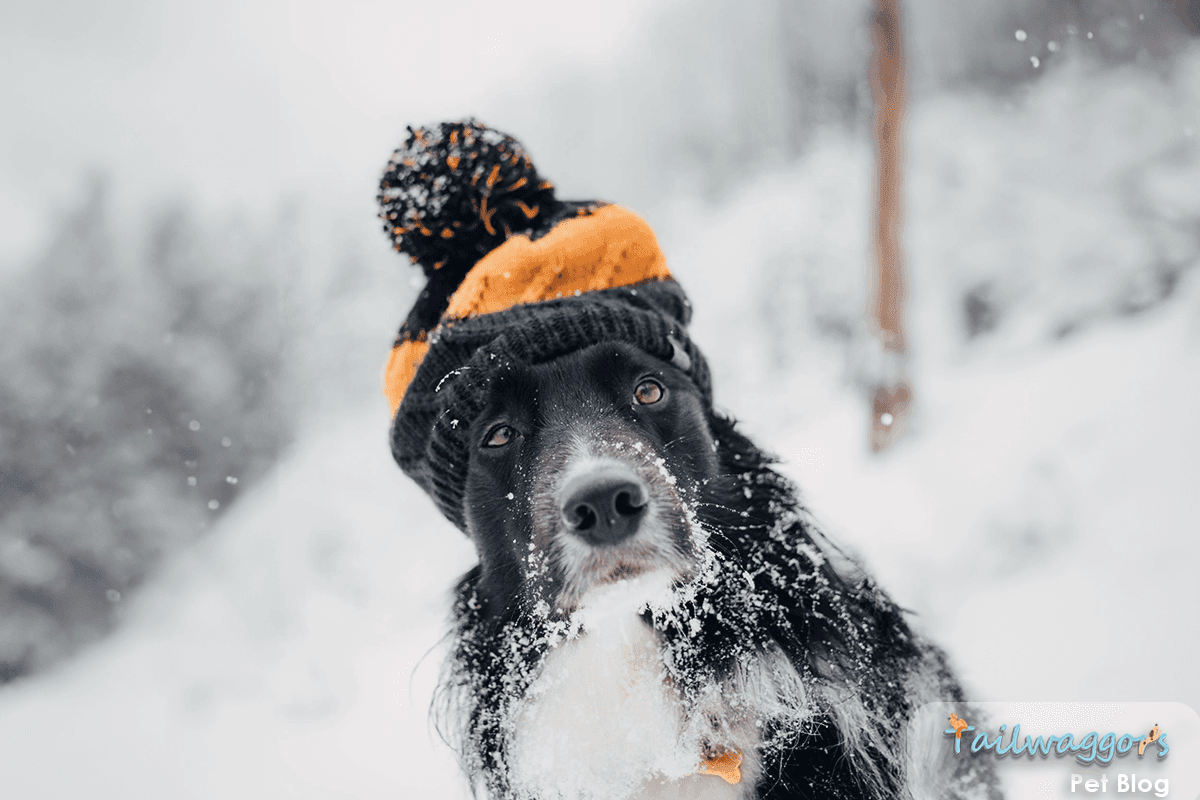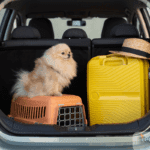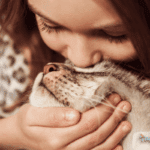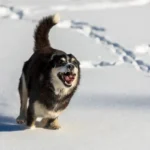As temperatures drop, our furry friends require extra care to stay warm and healthy. Pets are particularly susceptible to cold weather, with significant discomfort occurring when temperatures fall below 45°F (7°C). Keeping pets cozy isn’t just about comfort—it’s about ensuring their well-being during the winter months.
At Tailwaggors, we understand how challenging it can be to keep your pets active and comfortable during the colder season. This guide offers 12 science-backed strategies to help your pets thrive despite the chill.
👉 Proactive Care: Regular veterinary check-ups can identify potential issues early. Learn why routine health checks matter in our guide.
Indoor Comfort for Pets in Winter
1. Create a Warm Indoor Haven
To ensure your pets feel safe and warm, maintain a consistent indoor temperature between 68-72°F (20-22°C). Avoid drafts by sealing windows and doors, and provide cozy, draft-free spaces for rest. A small investment in thermal curtains can make a big difference.
Additional Tip: Use programmable thermostats to maintain a stable temperature when you’re not at home, ensuring your pets stay warm without overheating. Additionally, ensure your pet’s sleeping area is away from cold tiles or uninsulated walls (source: ASPCA).
2. Best Pet Bedding Options
Upgrading your pet’s bedding is one of the simplest ways to enhance their winter comfort. Consider:
- Self-Warming Beds: These beds use heat-reflective materials to keep pets cozy without electricity.
- Elevated Beds: Keeping your pet off the cold floor reduces heat loss by up to 87%.
💡 For more tips on enhancing your dog’s comfort, explore “9 Simple Ways to Make Your Dog Happy”.
Recommended Products:
- K&H Pet Products Self-Warming Lounge Sleeper ($34.99)
- Frisco Elevated Dog Bed ($27.99)
3. DIY Thermal Bedding
Create your own cost-effective thermal bedding by layering fleece blankets with foam padding. Add a washable cover to ensure easy cleaning and maintenance. Include materials like reflective thermal liners for added warmth.
📖 Case Study: Sarah from Michigan shared how using reflective car windshield covers beneath her cat’s bedding provided exceptional warmth during a power outage.
Additional Ideas: For cats, consider creating a heated window perch that allows them to stay warm while enjoying their favorite view.
Outdoor Winter Safety Tips
4. Safe Outdoor Exposure Times
Pets love outdoor play, but winter requires stricter time management. Follow these temperature-based guidelines:
| Temperature | Max Exposure Time |
|---|---|
| Above 32°F | 30–60 minutes |
| 20–32°F | 15–30 minutes |
| Below 20°F | 5–15 minutes |
Why This Matters: Extended exposure to cold temperatures can lead to hypothermia or frostbite. Always supervise outdoor activities and ensure your pets are active during their time outside.
5. Essential Winter Gear for Pets
Equip your pets with:
- Insulated Coats: For instance, the Ruffwear Climate Changer Fleece Jacket ($39.95) is ideal for small breeds, while the Hurtta Extreme Warmer ($99) offers superior insulation for large breeds in harsh climates.
- Waterproof Booties: Protect paws with options like QUMY Waterproof Dog Boots ($25), which provide traction and warmth. Additionally, wipe your dog’s paws after walks to remove harmful salt or ice-melting chemicals.
- Paw Protection Balms: Use Musher’s Secret Paw Wax ($16) to prevent cracking and irritation.
🐾 Curious about balancing outdoor activities in multi-pet households? Check out “How to Help Your Dog and Cat Coexist”.
6. Regional Considerations
Pet owners in areas with extreme weather may need additional gear like snow-resistant coats or heated outdoor shelters.
🔍 Tip: For extreme climates, consider heated pet houses like the K&H Outdoor Heated Kitty House ($85), designed for small outdoor pets. Avoid extended outdoor exposure even for cold-adapted breeds like Huskies.
Extra Advice: Always wipe your pet’s paws after outdoor walks to remove ice, salt, and chemicals that can cause irritation or be harmful if ingested. Read more about Cold Weather Safety Tips for Your Pets
Nutrition and Hydration in Winter
7. Winter Dietary Adjustments
Cold weather increases caloric needs. Pets may require up to 30% more calories to maintain their body heat. Opt for protein-rich and fat-enhanced diets to support energy levels.
According to Dr. Esther Knoetze, our Small Animal Veterinarian, “High-quality proteins and fats are essential for thermoregulation, especially in colder months.”
Foods to Consider:
- Hill’s Science Diet Active Dog Food ($49.99)
- Blue Buffalo Wilderness High-Protein Cat Food ($38.99)
8. Hydration Strategies for Cold Weather
Dehydration risks persist in winter. Keep your pets hydrated with:
- Heated Water Bowls: Prevent freezing and encourage hydration.
- Moisture-Rich Foods: Supplement water intake with options like wet dog or cat food.
🚨 For emergency hydration tips, see our “Veterinarian’s Complete Cat Emergency Guide”.
Enrichment Ideas to Keep Pets Happy Indoors
9. Mental Stimulation Games
Keep your pets mentally sharp with:
- Interactive Toys: Puzzle feeders like the Kong Wobbler ($19) challenge your pets and reduce boredom.
- DIY Obstacle Courses: Engage their natural instincts with simple home setups.
📖 Case Study: John from Colorado built an indoor agility course for his Border Collie, incorporating everyday items like chairs and broomsticks for jumps.
Advanced Activities: Hide-and-seek games using treats can keep cats and dogs entertained for hours.
10. Physical Activities
Physical exercise indoors prevents lethargy. Play laser pointer games for cats or stair fetch for dogs to maintain activity levels.
💞 Strengthen your bond during these activities with guidance from “Deepening the Bond: 7 Proven Strategies”.
Special Considerations for Senior Pets and Vulnerable Breeds
11. Caring for Senior Pets
Senior pets are especially vulnerable to cold. Provide:
- Joint Supplements: Options like Cosequin ($29) support mobility.
- Extra bedding layers for warmth.
12. Breed-Specific Winter Needs
Short-haired and small breeds require extra insulation, while larger breeds might need protective paw gear.
🐶 Explore breed-specific advice in our “Airedale Terrier Breed Guide”.
Additional Note: Breeds like Huskies and Malamutes are naturally better adapted to cold, but they still require monitoring during extreme weather.

FAQ: Your Winter Pet Care Questions Answered
Q1: How can I tell if my pet is too cold indoors?
- If your pet is shivering, curling up tightly, or seeking out warm places like vents or blankets, they may be too cold. Consider adding a self-warming bed or extra blankets.
Q2: What are the best budget-friendly ways to keep my pet warm?
- DIY thermal bedding using fleece and foam layers is an excellent cost-effective solution. Reflective car covers can also help insulate pet beds.
Q3: Are certain breeds better suited for cold weather?
- Yes, breeds like Huskies and Malamutes are more cold-tolerant, but even they need protection during extreme weather.
Q4: How much exercise does my dog need during winter?
- Aim for at least 30 minutes of active indoor or outdoor play daily. Adjust based on your dog’s breed, age, and energy levels.
Q5: What should I do if my pet shows signs of frostbite?
- Gradually warm the affected area with a warm (not hot) compress and contact your veterinarian immediately.
Q6: Can my pet get dehydrated in winter?
- Yes, pets are at risk of dehydration in winter. Provide heated water bowls and incorporate moisture-rich foods into their diet.
Conclusion
By following these 12 science-backed strategies, you can ensure your pets stay warm, safe, and healthy this winter. Have your own tips? Share them below and subscribe for a free winter pet care checklist.
🌱 For additional safety insights, read “Toxic Plants for Dogs” to avoid indoor hazards this season.
And for “Outdoor Winter Hazards: Antifreeze, Ice Melts, Frostbite & Holiday Safety Tips.”
🐾✨ Discover new ways to keep your pets cozy, happy, and healthy during the chilly months.
Share this guide with other pet lovers and exchange your best winter care hacks. 🐶❤️











